“You, you, you oughta know”
Typically with “jukebox musicals” we see the use of an album, or collection of songs associated with a band or musical artist, to tell their life story. However, in Jagged Little Pill’s case, Alanis Morissette’s 1995 album of the same name is used to tell not her story, nor even a story set in the same time frame as the album’s release, but rather a modern-day tale of themes that still ring true almost 30 years after the songs were written.
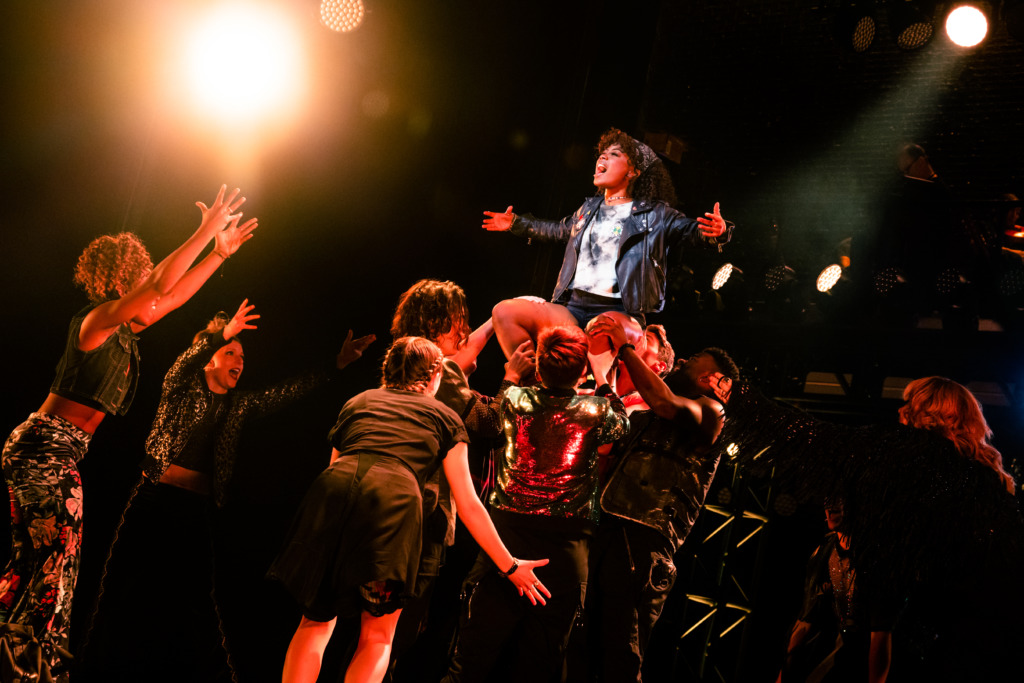
Before I continue, it is worth mentioning that there are scenes that can be quite triggering for some survivors. This production does deal with sexual assault and drug addiction directly, and while there is nothing overtly gratuitous in the representation of these events, there are scenes that are meant to make the audience confront these occurrences and feel uncomfortable. That in itself is one of the concluding themes: that it is important to confront the ‘uncomfortable’ rather than suppress it, and while confronting these ‘uncomfortable’ notions is a difficult pill to swallow, it will eventually lead to a process of healing.
With Book by Diablo Cody and Music and Lyrics by the incomparable Alanis Morissette with Glen Ballard, Jagged Little Pill largely uses the music of Morissette’s third album of the same name to tell the story of a well-to-do middle class American family (aptly named the Healys) living in a white suburban town in Connecticut. But all is not well in white suburbia. As the show opens and we get a very well executed delivery of an open Christmas letter to introduce us to our leading family, we are very quickly introduced to the stereotypical classification of each within the perfect family dynamic and the cracks in each character’s perfectly seeming suburban facade.
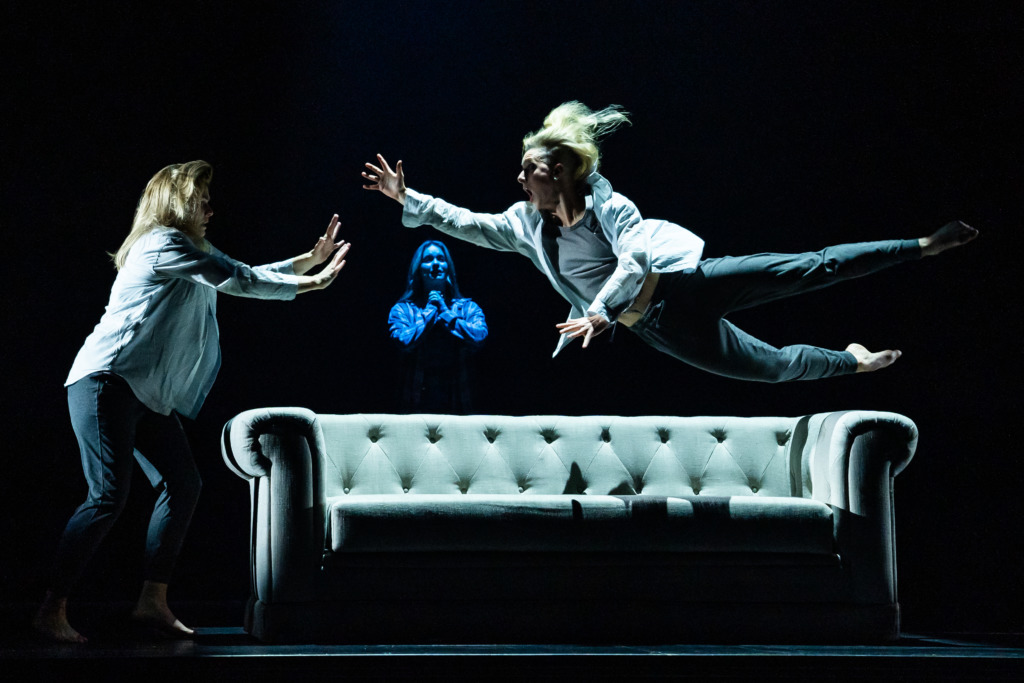
Matron of the Healy family, Mary Jane (played by Heidi Blickenstaff who is reprising her role from the Broadway production), is the super-perfect mother trying to keep her perfect family life together as she grapples with the self-denial of her opiate addiction and past trauma. Blickenstaff brilliantly shines throughout in her ability to not only bring home the fear, pain, and suffering of her character side-by-side with her fierce love for both of her children, but also nail those small moments of humor throughout. Being a layered and humanly flawed “perfect” character, Blickenstaff executes her character’s dry wit as a defense mechanism with masterful precision in such a way that it will offer both an emotional reprieve for the audience in moments where the atmosphere on stage gets super serious, but also add to the weight of those moments when the audience realizes how those jokes are meant to protect her character as a defense mechanism in those raw moments.
Meanwhile, her porn addicted work-a-holic husband, Steve (Chris Hoch), works 60 hours a week to provide for the family he loves, but feels disconnected to as a result of his long hours away. Hoch also shows a penchant for comedic timing and delivery. While the butt of many jokes, Hoch’s character is nonetheless loving and dedicated, and desperate to reconnect with his family, especially his wife. Hoch glides through the production with a seemingly effortless precision in showcasing these desires and frustrations.
Their adoptive daughter of differing racial descent, Frankie (Lauren Chanel), is the outgoing activist of the family and passionately attaches herself to righting the wrongs of society with her girlfriend, Jo (Jade McLeod), while not always rightfully addressing the wrongs of her own actions in her personal relationships. Chanel carries a lot in a story weighted with addressing transracial adoption and sexual identity as a young teenager exploring her own identity in a surrounding environment so different from herself. All the while she never fails to take up space and make a place for herself within it. However, Frankie’s storyline also shows the ramifications of such youthful identity exploration, and the emotional pain thoughtless youthful exploration can cause. But for the audience, this pain Frankie’s character causes Jo is worth it for the show-stopping and absolutely fabulous rendition of McLeod’s “You Oughta Know.”
Finally, the golden son, Nick (Dillon Klena), can do no wrong, until he does nothing and learns why that was wrong. Excellent in playing the easy-going and pleasant people-pleaser, Klena is able to show the inter-personal transition from naivety to awareness in his involvement in the pivotal moment of his classmate Bella’s story (played by Allison Sheppard), and why sometimes doing the right thing after the fact does not absolve the injustice of the world after all; but instead still takes personal introspection and work to be better going forward.
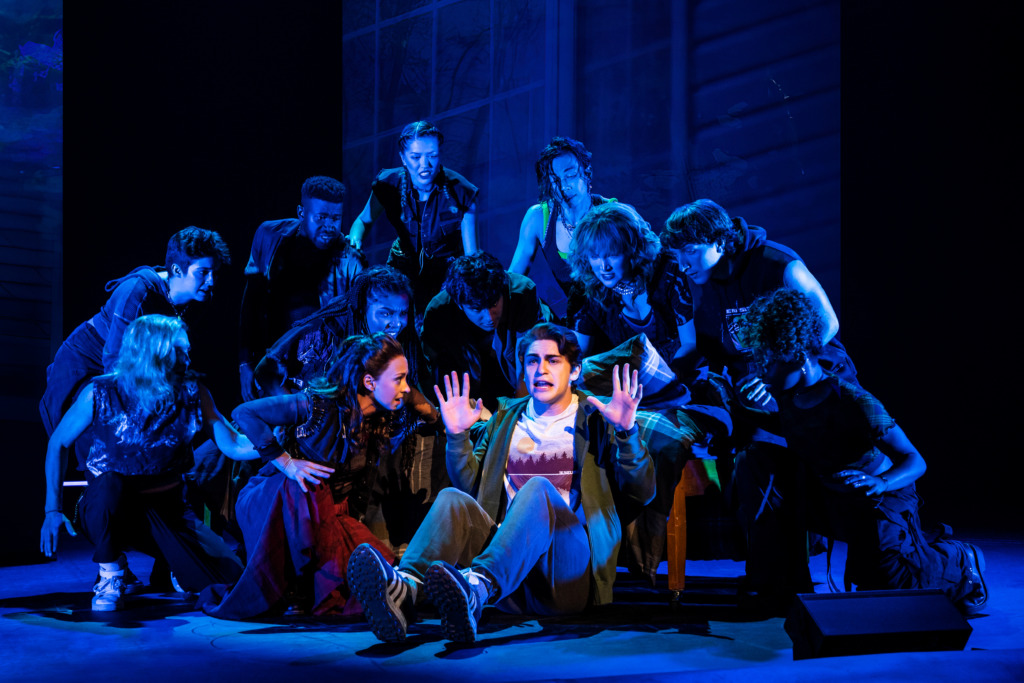
Difficult parts of the narrative’s execution include trying to incorporate… everything. It feels as if every social justice issue is packed into the show to the point where, though powerful in many moments of execution, it is easy to also feel disingenuous because there is not enough time to do much more than mention many of the topics and move on. In this way, it can at times feel like the show is trying to address all the world’s ‘Best Hits’ of social injustice: rape culture, gender and sexual identity, addiction, school violence, transracial adoption, disability rights, racism, homophobia, classism, just to name a few! And by doing so, they come across as being treated more like a ‘nod’ to naming these injustices of the world, rather than to actually make all of the problems feel attended to. In a way, it almost feels like cramming every subject into the background of the story is meant more to make the audience nod along and say, “Yeah! I know that one!”
But please do not misunderstand. Though I mention these shortcomings, it is the outstanding acting, singing, dancing, and overall atmosphere that is well worth seeing this production!
Scenic Design by Riccardo Hernandez and Video Design by Lucy Mackinnon pair hand in hand beautifully to create a simple but descriptive abstract of Connecticut suburbia. Framing the stage with an almost ever-present picket roof of a house grounds the setting in the confines of this small-town suburb where everyone knows each other and feels content in their seemingly safe environment. The floating projection screens do well in setting the place with abstract suggestions of the setting (the siding of a house to represent a home scene or a bookshelf lined with books for a counselor’s office), and flow seamlessly from one place to another both in projection and placement on the stage to transition the audience to another place.
Lighting Design by Justin Townsend does fine throughout but will really punch you in the gut during “Uninvited.” The purposeful choice of the harsh, stark white light framing Mary Jane and her mirrored self as she battles her own trauma heightens the sensation of her descent to rock bottom. Followed by the use of moments of complete darkness and harsh light to frame the moments of her family finding her after her overdose was a powerful choice to bring home the sensation of fear and panic as time speeds up and slows down simultaneously for her family.
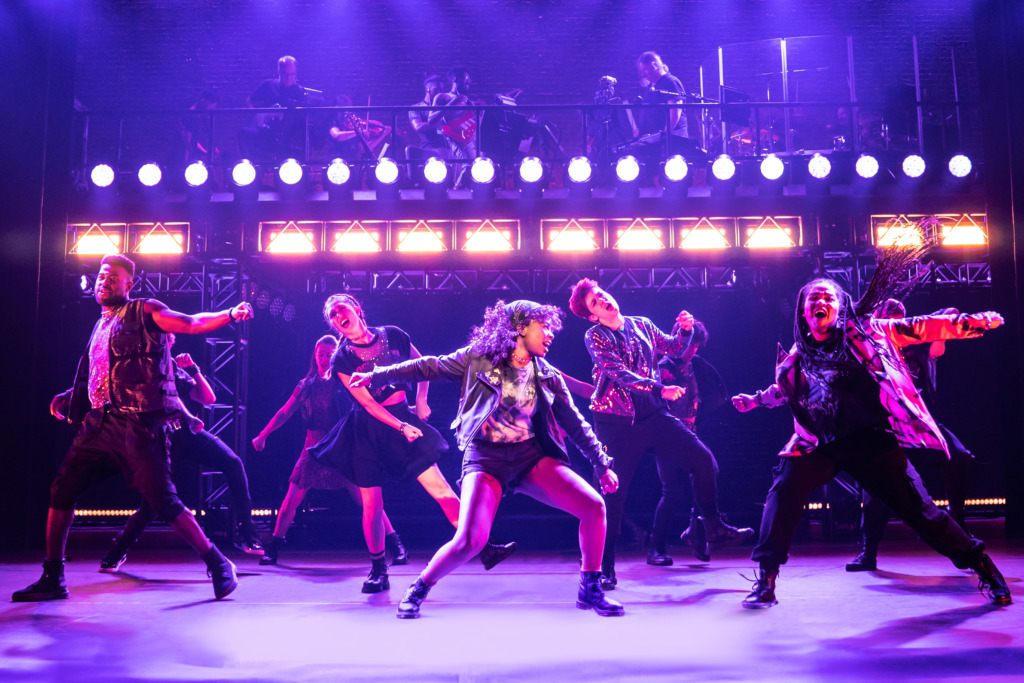
The costumes designed by Emily Reholz were generally wonderful throughout and captured the tone of contemporary suburban fashion with a special focus on how teenagers these days are experimenting with 90s fashion. However, the costume choices for the chorus segments were lost on me. When I say “chorus” I don’t mean the background characters; the “chorus” is a specific choice to differentiate the “chorus” characters from ensemble characters in the story. Mixed with fashion styles typical to the 90s and early 2000s, the chorus was dressed in a range of grunge to Sk8tr to emo-technic reminiscent of the early days of Hot Topic, and existing outside the fashion stylings worn by background characters in the general scenes. Ensemble characters may have worn pieces influenced by the resurgence of 90s fashion, but what the chorus wore was in a world of its own. For me, this choice was distracting as I often found my mind trying to piece together why the chorus wore these specific costume pieces making them look more ready for a 90s rave party as they framed the emotions of the primary characters that were not even born until years after Y2K.
But then again, I largely found the use of the chorus to be jarring and clashing at times with the actions and journey of the protagonist characters throughout. It was clear that their presence was meant to heighten the already elevated and extreme emotions of the primary characters and provide an extra ‘oomph’ to the raw and exposed feelings laid out through their songs; almost like their presence was meant to convey emotion in physical form. And while the dancing, Choreographed by Sidi Larbi Cherkaoui, was very powerful and dynamic and fantastic all on its own, there were times when the chorus’ presence detracted from the emotional journey already in motion on stage that I felt would have been quite capable of being carried by the colossal talent of the primary actors singing and enacting the scene on their own.
But that is in no way meant to detract from Cherkaoui’s excellent styling in both dance and motion. Each of the dancers get the chance to showcase their amazing talent and fierce presence throughout, and there is no doubt that whoever is on the stage rightfully owns a piece of it. The choreography and movement designed for this show is at times raw, but always dynamic, and does a resplendent job at making good use of the space and conveying art through movement. “Smiling” was a knock-out in its ability to showcase the sensation of being in and out of the moment as we see Mary Jane going through the motions of her ordinary day while on opioids…. but backwards! This number was mesmerizing and the definition of “finesse” itself.
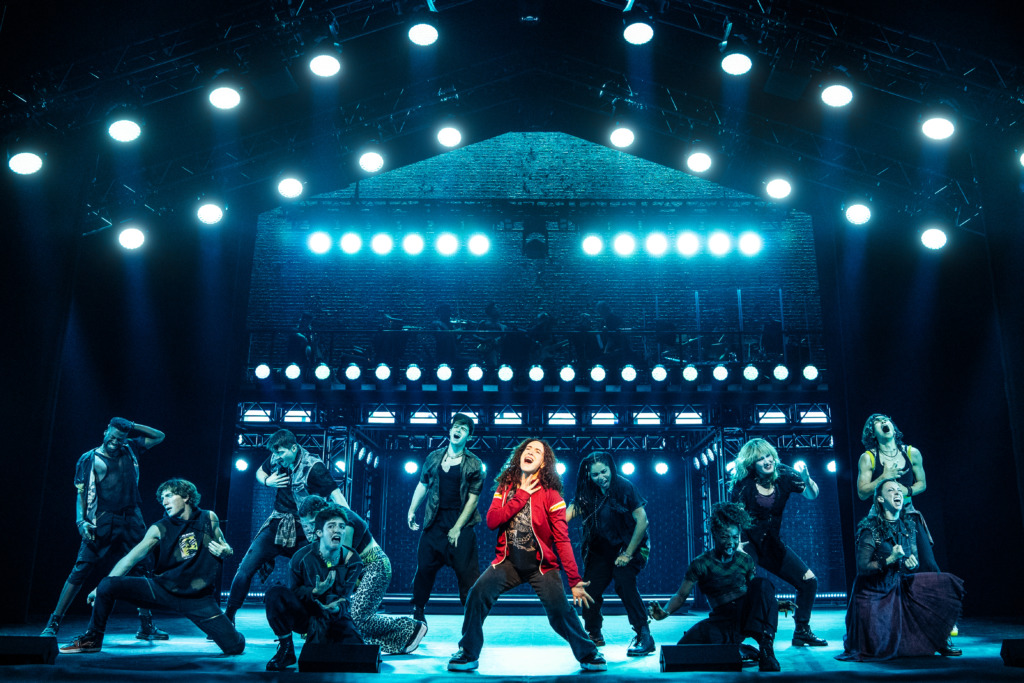
While there are a few distractions, this is absolutely a spectacular show that will pierce your heart and make you bang your head. Not enough can be said about the immense talent of the cast and timeless music. The pacing of each song allows for the poetry of the lyrics to take center-stage and move you in ways only Morissette’s words can. The idea of missing this show is worse than rain on your wedding day, or like a free ride when you’ve already paid. Here’s some good advice that I hope you will take: don’t wait on this one! It figures Jagged Little Pill is a must see this Spring!
Running Time: Approximately 2 hours 45 minutes, including one fifteen minute intermission.
Jagged Little Pill plays through March 26th, 2023 at the National Theatre, 1321 Pennsylvania Ave NW, Washington, DC 20004. For tickets call the box office at (202) 628-6161 or purchase them online.
